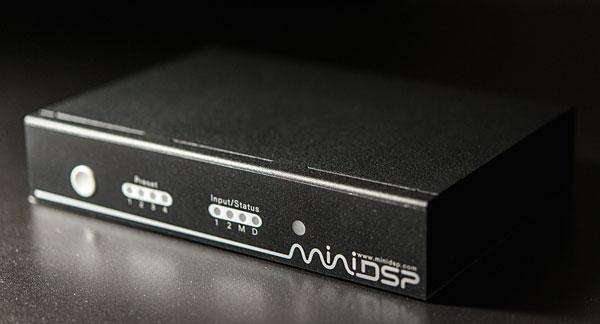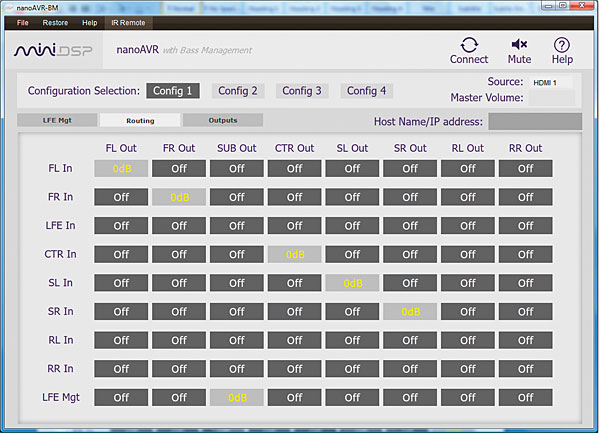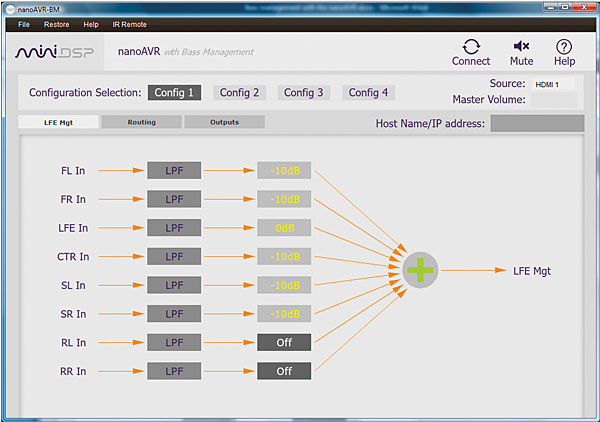| Columns Retired Columns & Blogs |
Music in the Round #69

It's August as I write this, and I'm looking back at some things that need to be discussed, and forward to the fall audio shows—particularly the 2014 New York Audio Show, which, by the time you read this, will have been held in Brooklyn, September 26–28. I grew up in Brooklyn, not in "the city," Manhattan, a place that we traveled to only for special reasons. Audio shops were rare in Brooklyn—I remember only Audio Exchange—but in Manhattan there was a small cluster near Grand Central Station, there was Lafayette Radio near the Holland Tunnel, a few scattered elsewhere, and the magnet of Liberty Street in lower Manhattan, where more than two city blocks were packed with audio shops. That was the Saturday hangout of me and my pal Ralph, and almost all the proprietors were notably tolerant of a pair of kids who, they must surely have known, had no money.
We made the rounds every week, and their patience in demonstrating the best stuff to us helped instill in me a love of good sound. I remember how impressed I was by the sound that emerged from a single bass-reflex speaker when I lowered the stylus into the groove. How could something so alive come from these boxes of metal and wood? I discovered stereo on Liberty Street, upstairs at Leonard Radio, where a pair of huge Bozaks, driven by McIntosh amps and a stacked-head ReVox open-reel tape deck, expanded the soundstage to create a greater sense of being in the concert hall, where a now-forgotten orchestra launched into Beethoven's Symphony 7.
At least at first, CDs were a lateral move that offered greater convenience and consistency, but still they amazed someone bred on vinyl because they did away with purely mechanical transduction in the player. More recently, of course, I've been captivated by multichannel, which mostly completes the task of re-creating the presence of the musical event begun with stereo.
Still more recently, I became fascinated with the storage and playing of music files—at my fingertips now are thousands of albums, in two and more channels, playable in glorious high resolution with no apparent moving parts (except for the speaker diaphragms and, in another room, the NAS drives). I feel so privileged to be able to enjoy great music whenever I wish, and am grateful to the audio salesmen on Liberty Street for encouraging me.
Today, in NYC and in most places, we do still have some stalwart audio shops, but an audio show is the best opportunity for listening to something new and getting a dose of the excitement that I had to go to "the city" to experience. Now, I will travel back to Brooklyn hoping for new discoveries.
But before the new round of audio shows, it's time to tie up some loose ends: an important update for miniDSP's nanoAVR 8x8, which I reported on in July; the saga of my efforts to play multichannel music on a Mac mini; and an overdue report on Meridian's newest flagship processor, the 861V8.
miniDSP nanoAVR 8x8
I was very impressed with this digital processor. With two HDMI inputs and one HDMI output, it kept everything digital while being a quite flexible and powerful eight-channel equalizer at a very reasonable price of $299. My only caveat was that the signal flow through the DSP required that its bass-management options be kept downstream from its equalization processing. That meant that the bass being rerouted from each of the main channels was equalized as if it were being reproduced by that speaker. In fact, after the subsequent bass management, it was actually being reproduced by a subwoofer—a quite different speaker in a different position in the room. As a result, the wrong filters were imposed on all the rerouted bass, and that compromised the success of the entire EQ effort. In addition, the bass/LFE mixing configuration precluded getting a proper balance of the rerouted bass and the LFE. That's why I avoided using the nanoAVR 8x8's bass management and recommended using the bass management in the downstream A/V receiver or preamplifier-processor.
As soon as miniDSP received the proofs of my review, they acknowledged the problem and promised a firmware update to remedy it. Tony Rouget of miniDSP said, "Thanks for pointing this out! Being aware of this limitation of the current DSP structure, we've actually already reworked the software and DSP firmware to allow standard bass management implementation. It all fits inside the structure, just need to add a new tab at input page." In a short time, miniDSP has made the update available for download to all registered users of the nanoAVR, and posted a description of its operation here.


The obvious changes in the user interface include a new line on the input-routing page, "LFE Mgt" (above top), to which your route the sub input (if any) but, at this stage, no other channel signal. Then you go to the "LFE Mgt" page itself (above bottom). There you can set the crossover frequency and level for each channel sent to the sub, including the LFE. If you click on the LPF (low-pass filter) button for each channel, you get a page that allows you to independently set the LPF and the HPF (high-pass filter) for that channel. You should begin with the settings for the LFE, which, logically, has only an LPF, but also offers onscreen assistance in setting the crossovers for the main channels.
Note that you leave the LFE input on this page at 0dB; in most cases, you won't want to attenuate it. On the other hand, you should attenuate the rerouted bass in each channel to –10dB, to balance the summed bass signal with the LFE. Moreover, it is advised that the subwoofer output, on the input matrix screen, be set at –6dB to avoid clipping the sub's input. These changes negate the main criticism I made in July.

There are two other improvements. First, the flaky network-communications link between the nanoAVR and the control app on a PC or Mac has been resolved—it should now remain secure through any lengthy setup session. Second, although I hadn't noted it earlier, OmniMic or RoomEQ Wizard were unable to package and send more than six filters per channel to the nanoAVR. With the latest version of REW (V5.01, Beta 22), the limit is now 10 filters per channel.
I can now highly recommend the miniDSP nanoAVR 8x8 for use with high-end pre-pros that lack EQ or have limited or inadequate EQ. I have no real criticisms of its sound or effectiveness. Especially considering its low price, it's ideal for adding truly sophisticated system equalization to any HDMI-equipped AVR or pre-pro.
Multichannel Adventures of a Mac Novice
I use Apple Macs only when absolutely necessary because, despite what's commonly claimed, I do not find using them intuitive in any way. Undoubtedly, this is the result of my early imprinting on and continued experience with Windows machines, but even the sleek iMac in my office seems somewhat obtuse to me.
After using in my main system PC-based servers like Baetis Audio's XR2 (reviewed in September 2014), I wanted the same facilities in my weekend system, where the server would feed the HDMI input of a preamplifier-processor. Something small seemed possible, since storage would be on an NAS drive in another room. The obvious choice would have been a compact Windows machine—say, an Intel NUC or ASUS VivoPC. I did recently participate in the successful installation of a VivoPC for a friend, but the siren song of the Mac mini was irresistible. It has a reputation for fighting well above its weight, an appealing design, and it seems that half the audiophiles on Internet forums who discuss file playback use Macs. However, most of those discussions are about two-channel playback; I suspect that most of those into multichannel use PCs. I wanted to find out what we might be missing.
On a whim, I dropped into B&H Foto & Electronic Corp., on Ninth Avenue in Manhattan, and bought a base Mac mini for $550. It has an Intel i5 processor, 4GB of RAM, and a 500GB hard drive. From my Windows experience, the mini's processor and memory seemed quite adequate, and Matt Ashland of JRiver, Inc., confirmed that. It came loaded with the current OS, Mavericks 10.9.4. I set it atop my audio rack, connected the mini's HDMI output to my Marantz AV8801 A/V receiver, the mini's Ethernet port to my local (wired) switch, a mouse to one of the mini's USB ports, and a wireless keyboard via Bluetooth. The mini booted up fine, there was no fan noise, and I spent a day exploring and learning how to use it.
- Log in or register to post comments




































